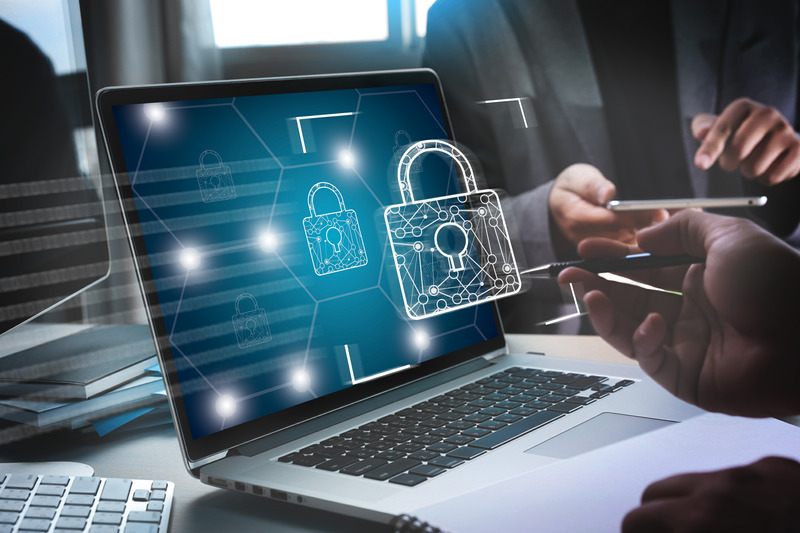
With cybersecurity incidents becoming more prevalent, LastPass, a popular password management tool, alerted users about a sophisticated phishing scam that exploited the LastPass brand. Cybercriminals directed victims to a counterfeit website through phishing emails, SMS messages, and direct phone calls. This incident highlights how social engineering tactics are increasingly being used to lure individuals into fraudulent activities. LastPass has urged users to report any communications falsely claiming to be from them.
This incident underscores the pressing threats in today’s digital landscape. As cyber attacks become more refined, employing methods like malware, phishing, ransomware, and social engineering, it is imperative for businesses to prioritize cybersecurity. At Metrik Marketing, we recognize the importance of our clients’ online safety. We prioritize implementing best practices and share our knowledge and expertise to ensure our clients are well-equipped to protect their businesses. We have compiled a list of strategies to help businesses strengthen their cybersecurity measures and safeguard against threats.

1. Employee Training and Awareness:
-
- Train employees on cybersecurity best practices, including how to recognize phishing emails, how to create strong passwords, safeguarding sensitive information, and the importance of regularly updating software. Awareness programs can help employees understand their role in maintaining cybersecurity.
- Ensure that employees understand how to report suspicious activities and potential security threats effectively. Many business platforms and tools are equipped with dedicated features for reporting such incidents directly to administrators or security teams. These platforms may also provide mechanisms for blocking or mitigating potential threats, safeguarding the organization’s digital assets and infrastructure.
- Cybersecurity training should be an ongoing process to keep employees informed about evolving threats and best practices.


2. Strong Passwords:
-
- Sriram Karra, senior product manager of sign-in security at Google, highlighted in a recent blog titled “6 cybersecurity mistakes people make — and what to do instead” the risks of using the same passwords for multiple accounts. Improving the security of your business accounts requires enforcing the use of strong, unique passwords.
- A password management tool like LastPass can assist in generating and securely storing strong passwords.
- Additionally, LastPast has suggested using passphrases (like “Myvacation2paris-wasincredible”) which are more likely to be remembered and long enough to provide complexity.

6. Data Encryption:
Encrypt sensitive data both in transit and at rest to prevent unauthorized access. This includes encrypting emails, files stored on servers, and data transmitted over networks.
7. Regular Data Backups:
Implement a regular backup strategy to ensure critical data can be recovered in case of a cyber attack or data breach. Backups should be stored securely, preferably off-site or in the cloud, and tested regularly to ensure data integrity.

8. Access Control and Least Privilege Principle:
Limit access to sensitive data and systems to only those who need it to perform their job duties. Apply the principle of least privilege by granting users the minimum level of access required to accomplish their tasks. Regularly review and update access privileges to minimize the risk of unauthorized access and ensure continuous protection.
9. Incident Response Plan:
Develop and regularly update an incident response plan that outlines steps to take in the event of a cyber attack or data breach. This plan should include procedures for detecting, containing, mitigating, and recovering from security incidents.

10. Regular Security Audits & Penetration Testing:
Conduct regular security audits and penetration testing to identify and address vulnerabilities before they can be exploited by attackers.
11. Network Segmentation:
Depending on the organization’s size, network complexity, and security needs, implementing network segmentation may be worth considering. By dividing the network into segments, the spread of cyber threats in case of a breach can be limited. Network segmentation aids in containing attacks and preventing attackers from moving laterally within the network.

12. Compliance with Regulations and Standards:
Depending on the nature of your business and the data you handle, ensure compliance with relevant cybersecurity regulations and industry standards such as:
- General Data Protection Regulation (GDPR)
- Health Insurance Portability and Accountability Act (HIPAA)
- Payment Card Industry Data Security Standard (PCI DSS)
- ISO 27001: a framework for managing an organization’s information security.

We’ve highlighted ongoing measures essential for cybersecurity readiness, such as educating employees, keeping security tools current, regularly backing up data, consistently reviewing access privileges, and conducting security audits. By diligently implementing these strategies, businesses can effectively minimize their vulnerability to cyber threats, safeguarding their assets, data, and reputation.
At Metrik Marketing, our unwavering dedication to client safety is demonstrated by our continuous efforts to stay informed about the latest cybersecurity trends and developments. We prioritize our clients’ success and safety by sharing our knowledge and best practices, ensuring they can navigate the digital landscape with confidence. As their trusted partner, we provide not only top-notch marketing services but also essential guidance in cybersecurity, empowering them every step of the way.
Photos:
Photo: John Schnobrich on Unsplash
Photo: ©Anawat_s via canva.com
Photo: ©juststock via canva.com
Photo: Dan Nelson on Unsplash
Photo: Adi Goldstein on Unsplash
Photo: Domenico Loia on Unsplash

